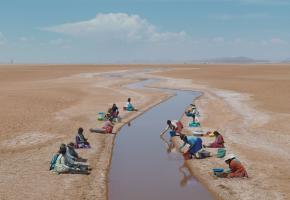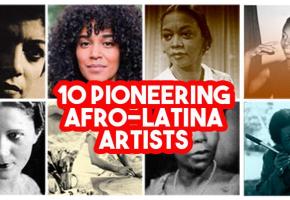It would be no exaggeration to say that the strong international presence of Latin American cinema today is largely thanks to the likes of Patricio Guzmán. Born in 1941 in Santiago, Chile, Guzman belonged to a generation – along with contemporaries such as Pino Solanas and Glauber Rocha – that overcame death threats and detention by authorities determined to stifle them in order to set the scene for Latin American cinema.
As a student and scholar of Latin American cinema, as well as an aspiring documentary film-maker, his films have been fundamental to many people’s knowledge about Latin America – Europeans, Americans and also Latin Americans themselves. It is no secret that films such as The Battle of Chile and The Pinochet Case deal with many of the themes Latin American governments, not least to say Chile’s own, would rather sweep under the carpet, but their beautiful cinematography and profound impact on international audiences and critics deemed this impossible.
Guzman studied documentary film in Chile and then received a diploma as director-filmmaker in Madrid in 1970. By then he had made some short films but it was not until The Battle of Chile, completed in 1979, a three part, 5-hour documentary about Pinochet's coup of 1973 the end of Allende’s government, that he became recognised. It received awards for its thrilling and beautiful portrayal of Chile at a time of trauma and upheaval.
In November 1973 he left Chile in exile, under death threats and having spent two weeks arrested, and lived in Cuba, Spain and France. His story and those in his films, about the struggle against oppression, are highly personal but also universal – leaving a lasting impression. Along with his films, he has also written books and articles and teaches courses in Latin America and Europe, and he sits on the panel of many film festivals, including The International Documentary Festival of Santiago, which he founded and is now the director. The majority of his recent films, including The Pinochet Case, Salvador Allende and, now, Nostalgia for the Light, have all been at major international festivals and are multi-award-winning.
Guzmán is simply one of the most important Latin America directors of the 20th and 21st century. His latest film Nostalgia for the Light encapsulates all of his great features: subtle, humane film-making that touches on personal and human truths, full of an aesthetic brilliance that moves the viewer.
LL: How did the relationship between the astronomers and the women develop in Nostalgia for the Light: was it an organic process or something you wanted to create?
Patricio Guzman: Nostalgia for the Light would not exist were it not for the characters. I never direct my characters. A documentary is based on people’s real life problems and issues. When Gaspar compares his work to the work of the women who appear in the film, it was completely his idea. When Violeta says that telescopes could be used to study the Earth – that was also completely her idea.
LL: Bearing in mind the technology boom nowadays, would you say that the documentary form is an important medium to transmit knowledge and ideas, particularly when they have to do with the past?
PG: You do not need to over-complicate it. The documentary form is similar to other forms. Films about memory simply have to be made, as do novels about memory, or poems, or essays, or theatre. All of this just has to be done. The process is about the personal initiative of each artist. It does not depend on modern technology or the internet.
LL: The cinematography and scenography in Nostalgia are impressive. Why did you choose the desert as your environment?
PG: The desert is a space of the past. There are bones, mummies, telescopes, the disappeared, and petrified animals, amongst other things. The whole desert is a box that contains the past. It is because of this that I decided to film there.
LL: How did your interest in the desert and astronomy develop?
PG: The Atacama Desert in Chile is fast becoming a centre for global, universal astronomy. Therefore it can provide a wonderful backdrop for many films.
LL: How was the process of finding and picking the characters for the film?
PG: It was very easy to find the characters. It took us no more than three months.
LL: Nostalgia ends up dealing with the Chilean dictatorship somewhat indirectly. How did this approach differ from your earlier films?
PG: One has to freshen up and renew one’s style. New ways of narrating and approaching stories have to be invented.
LL: How was the film-making process for Nostalgia? What was your team like?
PG: Every film is a different adventure. There is not set recipe. The team for Nostalgia was made up of four people, and the whole process took some five years.
LL: What inspired you to make films, and which directors were influential to you?
PG: You can see a list of influential films as well as a lot of other information on my website, www.patricioguzman.com. Look for the article “Movies That Marked Me Forever”. Some examples include: The Living Desert by Walt Disney, Le Mond du Silence by Jaques Yves Cousteau and Louis Malle, and Europa di Notte by Alessandro Blasetti.
LL: What are the most valuable qualities for a documentary film-maker?
PG: Intuition, instinct, writing and imagination.
LL: Finally, what advice would you give to aspiring directors?
PG: Perseverance, tenacity, patience, work and talent.
Nostalgia for the Light is on limited release in the UK now. There is an ongoing retrospective of his work, called The Power of Memory, until July 28 at the BFI. For info and tickets



















